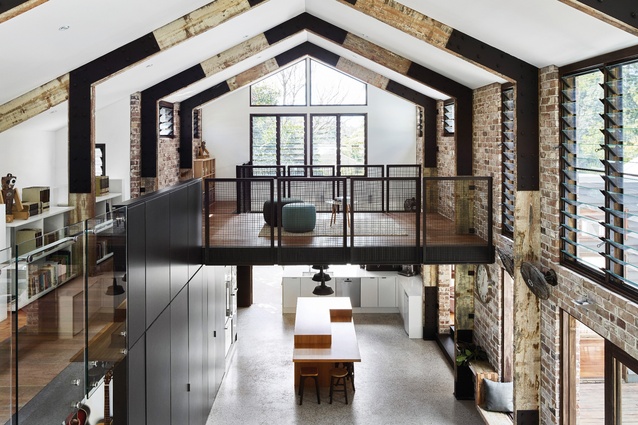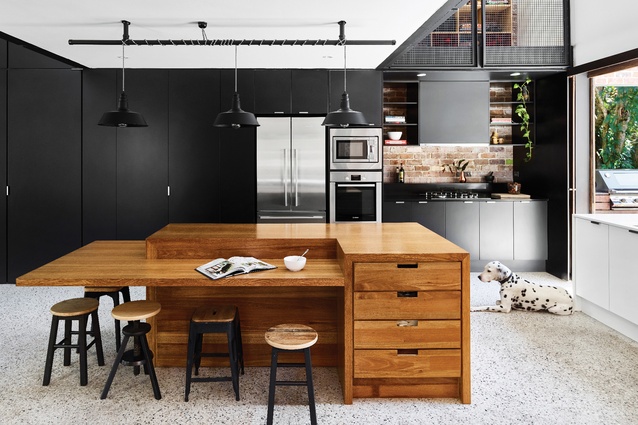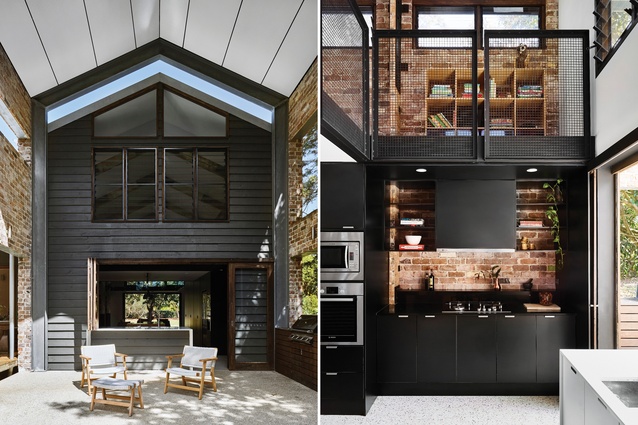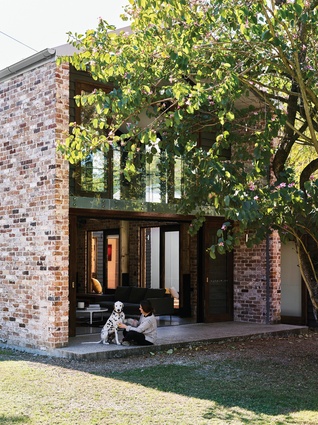Coastal barn: Glass House Residence
Representing the socially conscious ideologies of its designers, this cleverly stitched-together, barn-like family home by Maytree Studios is “engaging, honest and refreshingly straightforward.”
The Glass House Mountains rise like mythological creatures from the coastal plains of Queensland’s Sunshine Coast. According to Aboriginal Dreaming, the dominant peaks Tibrogargan and Beerwah are man and wife. Their children – Coonowrin, Tunbubudla, Miketeebumulgrai and Elimbah, among others – are settled nearby.
This bountiful country has supported Indigenous life for millennia and today produces subtropical delicacies like pineapples, custard apples, avocados and macadamia nuts. Quaint homes on generous land parcels are interspersed between plantations. In the midst of these sits Glass House Residence, designed by architect Rebecca Caldwell of Maytree Studios.
Glass House Residence belongs to Rebecca’s brother Andrew, his wife Katie and their three children. When the family acquired the flat site of 2,000 square metres, it came with a modest timber cottage and several established trees. Over several years Andrew completed staged alterations and additions, which have included a new dining room, a treehouse and a brick courtyard with fire pit.
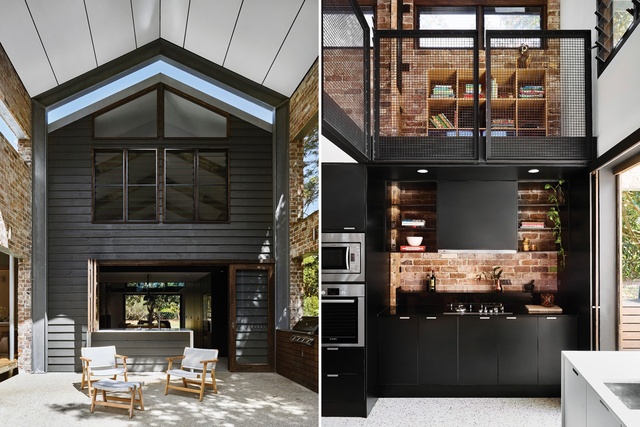
The most significant stage of the masterplan, designed by Rebecca and constructed by Andrew, was completed recently and comprises a two-storey living hub. The new addition has allowed the old cottage to retire as a dormitory and for family life to play out over a larger portion of the site.
The new building has kin in the rudimentary farm sheds that dot the surrounding landscape. The double-height living space conforms strictly to the gable-roofed extrusion of the barn typology and does so unapologetically. Volumetric interest is created through the insertion of a mezzanine floor and walkway, which respectively hover above a central kitchen bench and extend along the western edge.
The mezzanine establishes the rise and fall of the ceiling volume, with tall spaces coinciding with the cooking hub and sitting room. The interior is a joyful, lofty volume where conversation and activity can be casually shared among family members within the single, multi-use space.

The barn is oriented with short, largely glazed ends facing north and south and long, mostly solid sides facing east and west. The long axis is determined by central alignment to a mature orchid tree, with outlook, privacy and shade moderated by its delicate screen of pink blooms and green foliage. The western wall closes down to protect the space from solar gain.
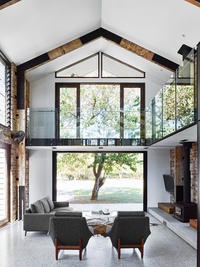
Kitchen pantry, cupboards and bathroom door are all packed into a continuous, black joinery unit, with a staircase and fireplace completing a neatly ordered service edge. The opposite eastern side comprises openings set within the structural grid to allow direct connections to the adjacent dining room and courtyard.
Certainly the most influential component of the scheme is the choice of materials employed to generate the visual aesthetic and define the structural order. The principal elements are masonry and timber, which were sourced through salvage yards and internet traders as a means to manage cost, minimize environmental impact and imbue a sense of history within the contemporary setting.
Recycled bricks from the Brick Pit in Sydney were used to construct the two-storey, double-brick cavity walls. Graffiti bricks are included in the mix to enliven the clay-toned palette with the occasional flash of peach and lime. Attention is drawn to the crafted nature of the masonry, with flush mortar trowelled loosely to accentuate the rough, rounded edges of each dry-pressed brick.
Oregon timbers, the lineage of which can be traced to a 1927 import from Canada, were sourced from a dismantled Sydney factory and used to create the timber portal frames. Each timber surface remains as it was found, some with flaking paint and others with sides worn through regular contact, each piece a reminder of the colossal species from which it was milled.

Timber, brick and steel work together to support the roof structure, provide adequate structural bracing and establish a visual rhythm. The scale of the room is closely tied to the quantity of materials sourced and the maximum spans achievable, striking a balance of amiable proportions. The building has a sense of spatial generosity despite its relatively modest footprint, as well as a very homelike and comfortable feeling of enclosure.
Glass House Residence achieves something greater than the sum of its thoughtfully sourced and cleverly stitched-together parts. It represents the socially conscious ideologies of Maytree Studios and in particular the belief that architecture should be affordable and the process of design transparent.
The practice works hard to bring invention where budget is limited and to engage in realistic conversations about cost and time management throughout all stages of design and construction. Such ideals translate directly into architectural outcomes that are engaging, honest and refreshingly straightforward. Maytree Studios produces a responsible kind of architecture that balances care with assertiveness and good manners with a loveable sense of humour.
This article was first published on ArchitectureAU.com.

